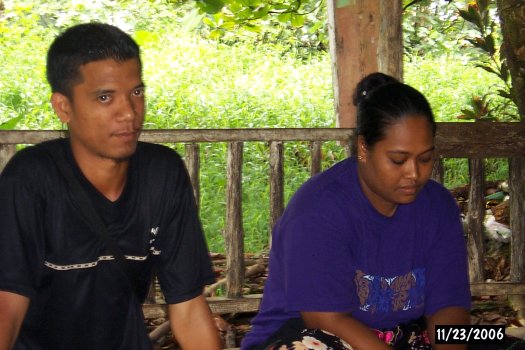
The spelling errors are those of the author!
Franz and Hellan await the start of the sakau ceremony

The plant is brought as a whole plant, replete with two or four stems.
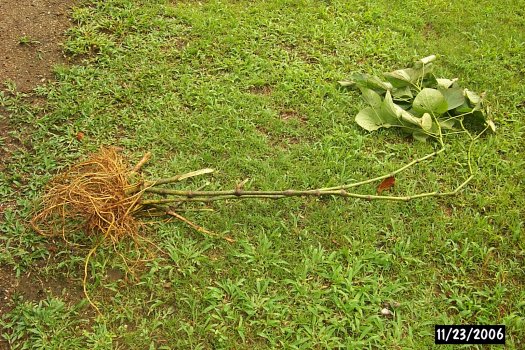
The roots are the only part of the plant that contains kavalactones
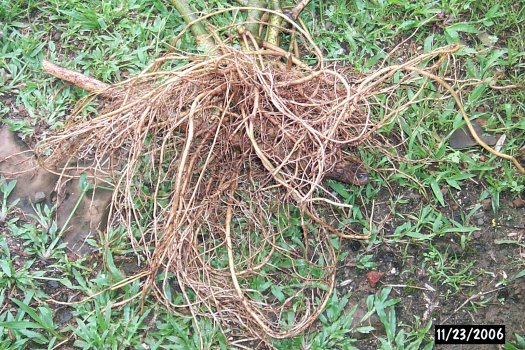
The side roots are about 10% kavalactones, the woody core of the root stock is about 5% kavalactones.
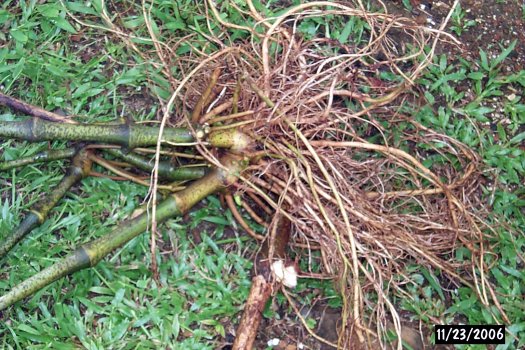
The sakau stone, peitehl is a special stone. Nothing is put on the stone except sakau. It is not a table or a place to sit. Not ever. The left stone is for the nahnmwarki or his representative in a kosapw, the soumas en kosapw. The class was honored by the host's decision to pound the left front stone. This stone is referred to as poalen koadu and soumoahl.
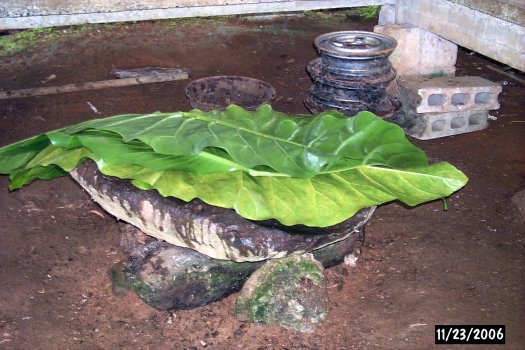
The right front stone would serve Nahnken if he were present as is referred to as poalen mwahu and pelien soumwoahl.
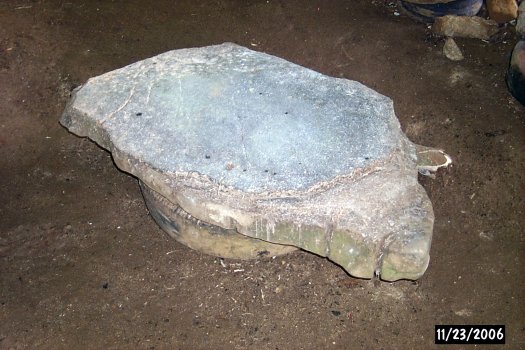
Cenileen and Alexander demonstrate appropriate sitting positions on the nahs platform: no dangling of one's legs over the edge of the platform after the sakau has entered the nahs.
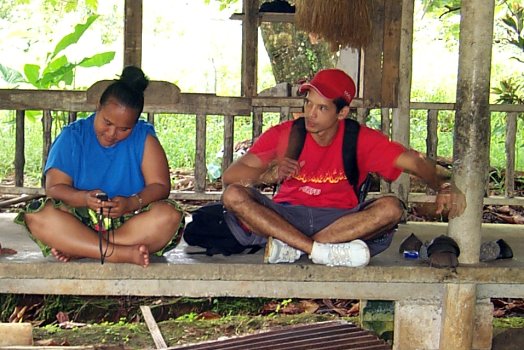
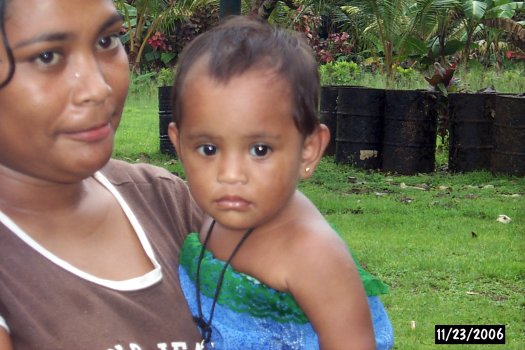
The ceremony was held next to the Saint Barnabas church in Paies, Palikir, Pohnpei.
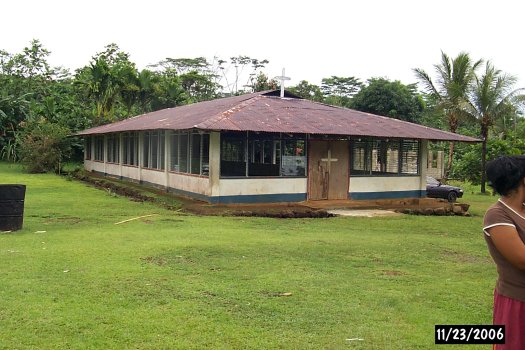
The nahs.
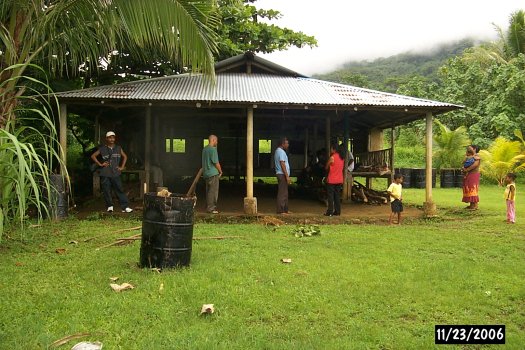
Nixon sitting properly.

Our host provided two kiams with coconuts for the students.
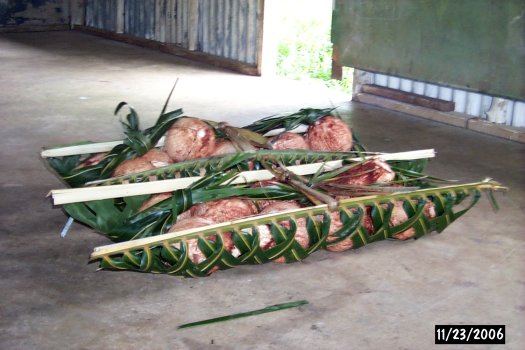
Once sakau has entered the nahs everything becomes much more serious and those who know are much more careful to behave in traditionally appropriate manners.
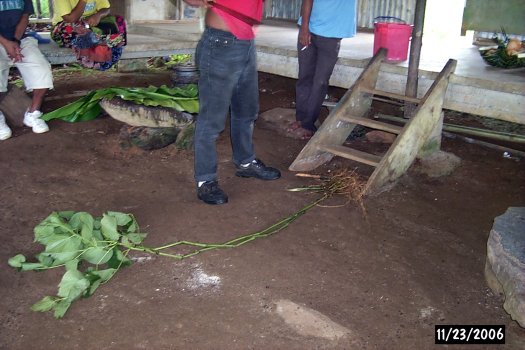
The branches are cut by a man with a title appropriate to that particular task.
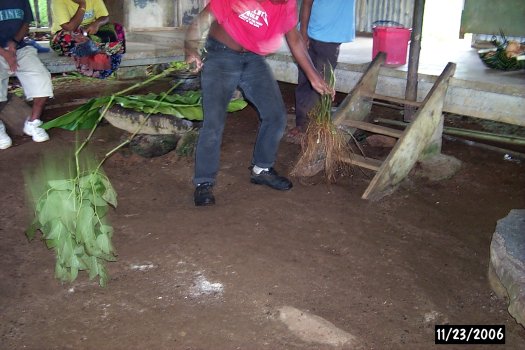
The Alocasia macrorrhiza leaves are placed under the peitehl.
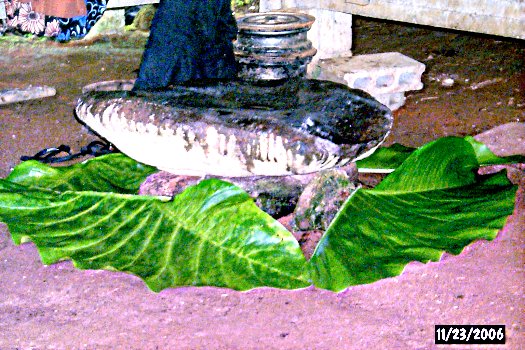
The sakau is placed on the stone. Those who will pound the sakau must wait for the menindei to tell them to start with the call, suk i suk!
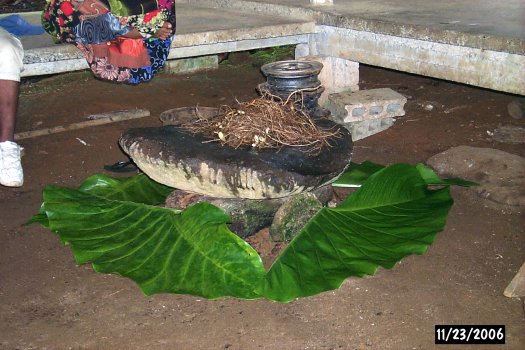
Sakau is traditionally cleaned with the husk of a coconut.
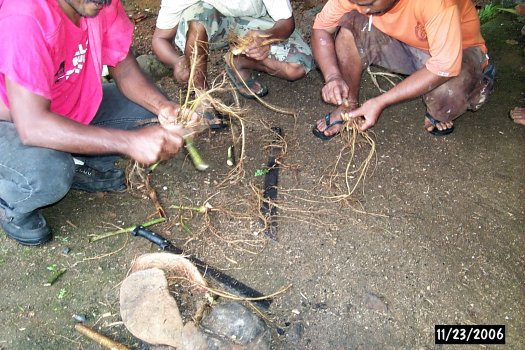
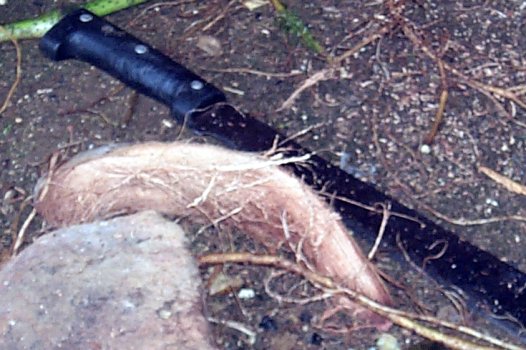
The root is pounded with basalt rock pounders (moahl) prior to squeezing.
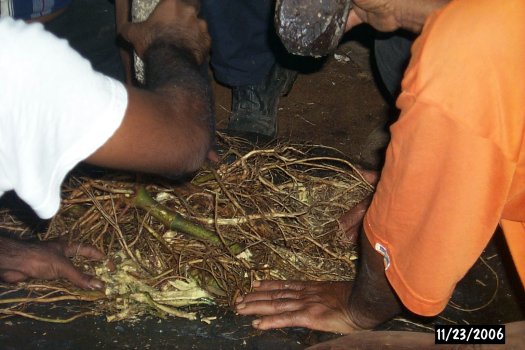
In nahs with sakau present the world of tradition and cultural practices hold. The host asked the students to "pretend" and to enact the ceremony under his direction. Yet this is far more complex a situation than the word "pretend" can convey. The places the student's are sitting are places of real power and respect, not pretend power. There is a risk of offending if they perform incorrectly, and while they sit in those positions they could theoretically exercise the command prerogatives of that position. Kevin demonstrates his knowledge of traditional etiquette by sitting in a manner so as not to offend Golbert. Anthony sits as the one who keeps nahnmwarki informed of events in the nahs.
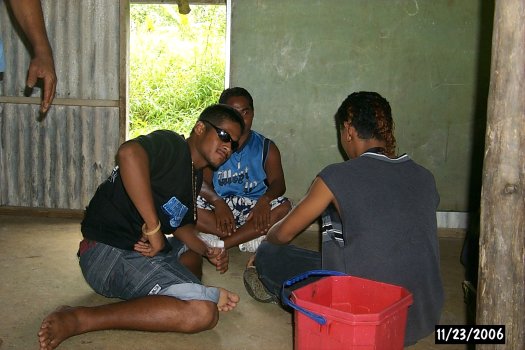
Hundra and Wihper are not immediately aware of their faux pas and have sat incorrectly. Later in the session they will correct their sitting under the direction of the menindei.
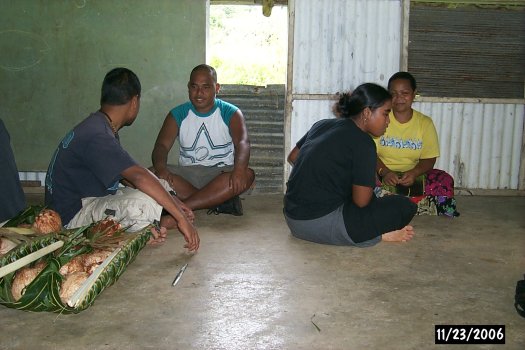
The sokama calls the kohlo to the peitehl. During the pounding the village chief (soumas en kosapw) soulik arrived. As a result all of the men hurriedly pulled off their shirts to show respect to the soumas. With his presence the serious nature of the event was stepped up a notch. At the same time the class was honored by his presence. This would mark the first time a soumas would preside at a class sakau ceremony in SC/SS 115 Ethnobotany.
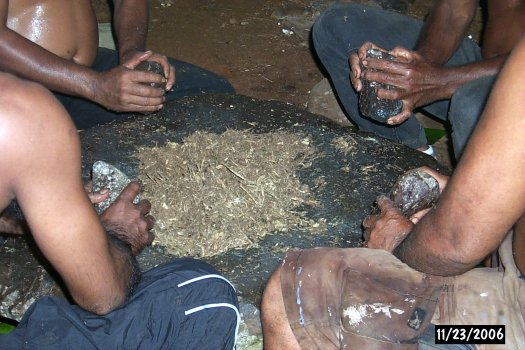
Qulihter and Cenileen sit in as nahnalik and nahnkeniei, the wife of the nahnmwarki and nahnken respectively.

Billy sits in as the nahnken.
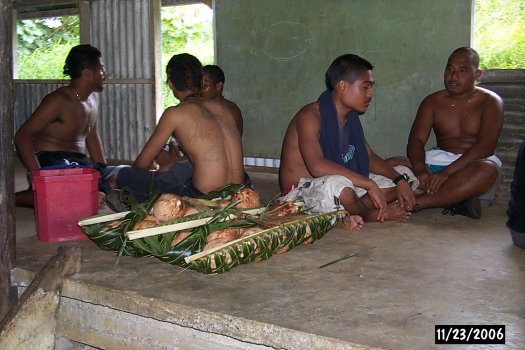
Don explains and translates some of the events.
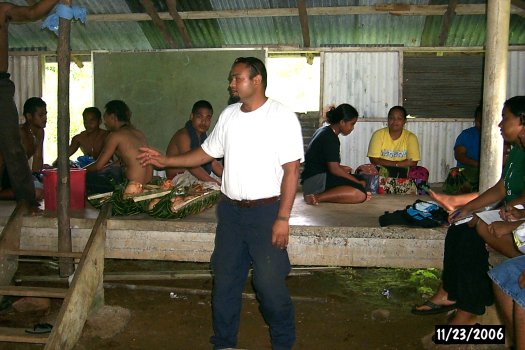
Hundra corrects her sitting posture.
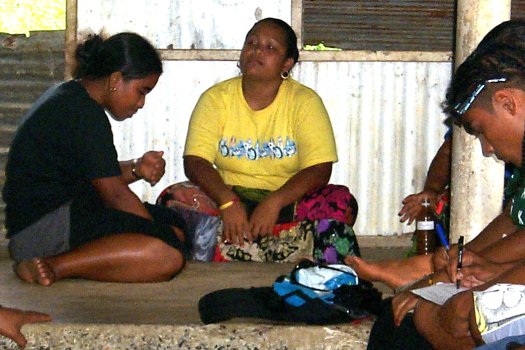
The first cup goes to nahnmwarki. No one talks during this time of the first four cups.
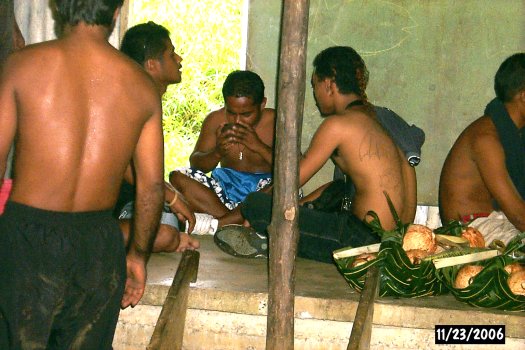
The second cup goes to nahnken. Both the menindei and the server for the nahnken check that no magic has been placed on the sakau. The menindei must also be a very strong man, he is the final line of defense of the nahnmwarki should someone attempt to attack the king.
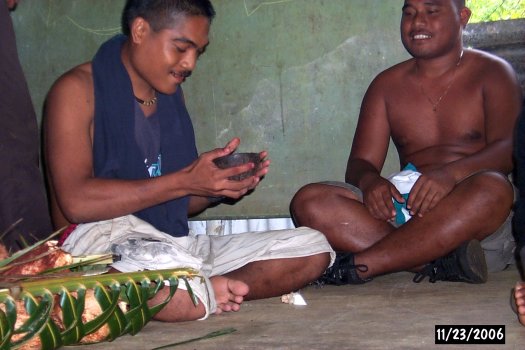
Wihper attempts the ritual cup passing, eyes closed as required by tradition.
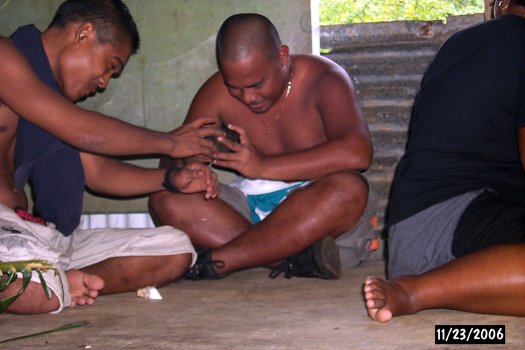
Hundra receives the cup from behind and over her shoulder.
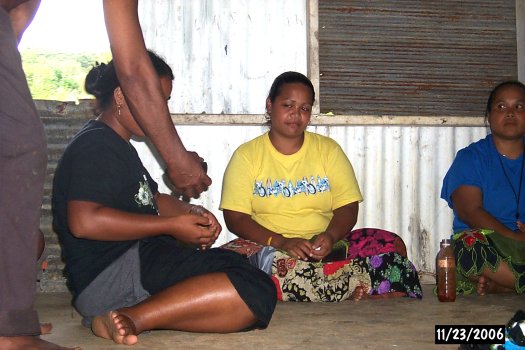
The third cup in Sokeh's goes to nahnalik.
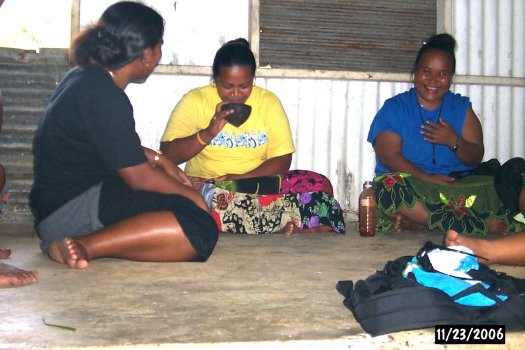
Hundra performs the "look away" blind cup return to the menindei. It's all about respect. A woman as young as Qulihter is not likely to have previously received the third cup with all of the power that third cup contains.
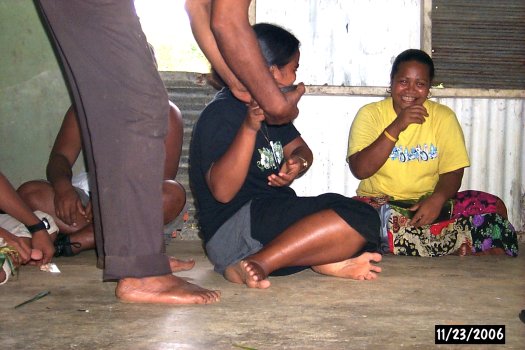
The fourth cup is returned to the nahnmwarki who can then redirect the cup to a special guest. Only after the fourth cup in Sokeh's can the business of the gathering be announced. Until now no one speaks and, technically speaking, no one knows the purpose of the gathering. In days of yore the pounding of a stone called people to a nahs. Not until that fourth cup was completed would the gathered throng know the occasion.
Ethnoherb • Ethnobotany • Lee Ling • COMFSM